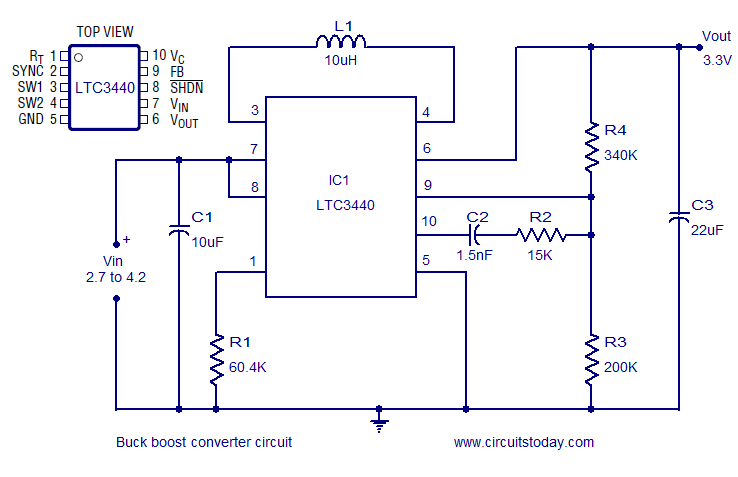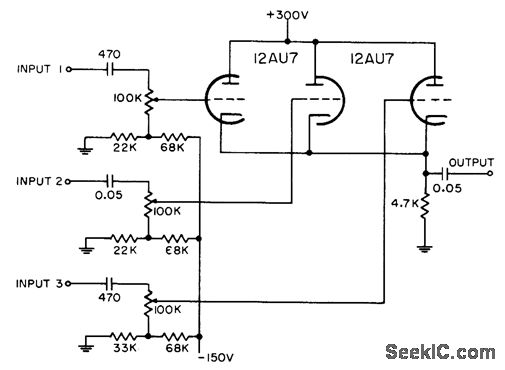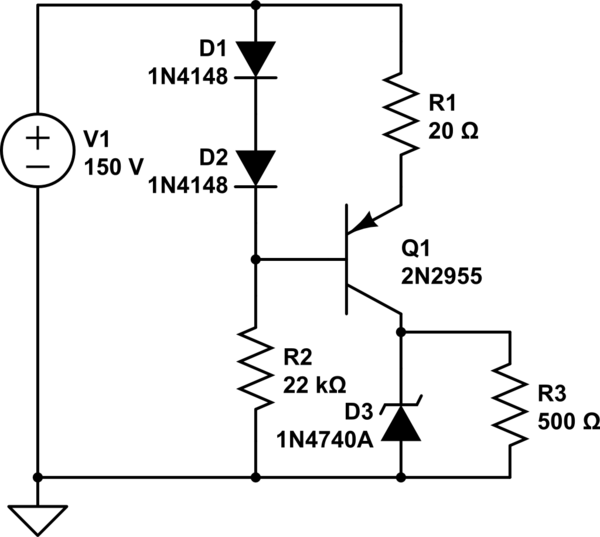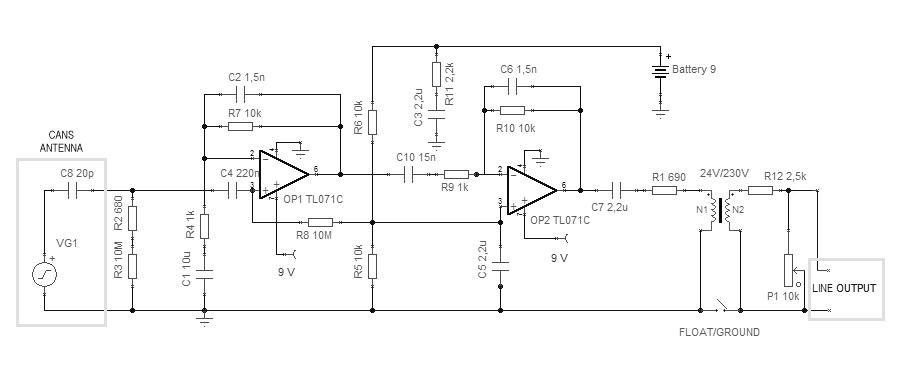
Output input can be balanced equilibrium Repeater
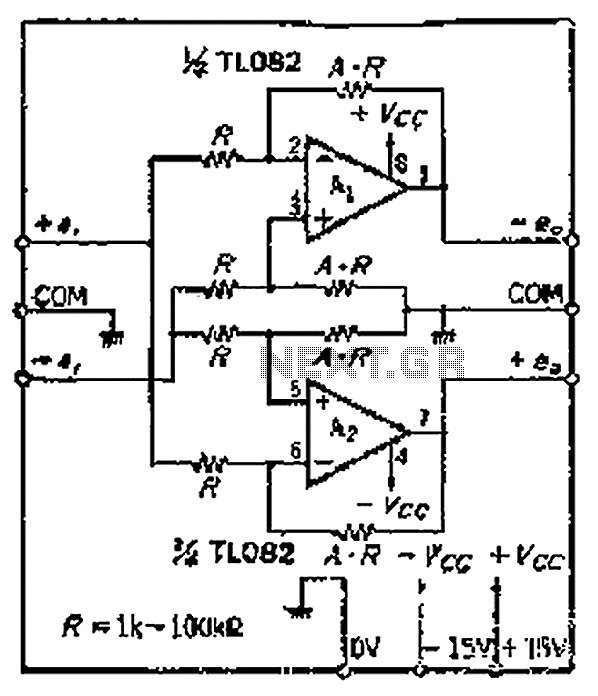
The circuit features a symmetric configuration of two basic differential amplifiers. The differential inputs, labeled +IN and -IN, are connected to ensure balanced input. The output signal components are inverted, resulting in a phase-coherent output. Although the circuit requires a total of eight resistors, they are all of the same value, which is essential for optimal performance at low frequencies. The appropriate resistance values range from 10kΩ to 100kΩ. At video frequencies, these values should be reduced to minimize circuit impedance. It is recommended that the resistance values be set between 1kΩ and 5kΩ to achieve desirable performance characteristics, especially in applications requiring a broad frequency response.
The described circuit is a dual differential amplifier configuration that offers balanced input and output characteristics, making it suitable for various applications including audio processing and signal conditioning. The differential inputs, +IN and -IN, are designed to receive signals that are equal in magnitude but opposite in phase, which enhances noise rejection and improves signal integrity.
In this configuration, the use of eight identical resistors is critical. This uniformity ensures that the gain and bandwidth of the amplifiers remain consistent and predictable. The choice of resistor values is crucial; lower resistance values are preferable for high-frequency applications to reduce noise and improve bandwidth. Conversely, higher resistance values are suitable for low-frequency applications where noise is less of a concern.
The circuit's output is phase-coherent, meaning that the output signal maintains the same phase relationship with respect to the input signals, albeit inverted. This property is particularly useful in differential signaling applications, where maintaining signal integrity is paramount.
To optimize performance across different frequency ranges, adjustments to the resistor values may be necessary. For applications involving video frequencies, it is advisable to reduce the resistance to minimize the impedance seen by the circuit, thereby enhancing the response time and overall performance of the amplifier.
In summary, this differential amplifier configuration is designed for versatility and efficiency in handling a range of frequencies, with careful attention to resistor selection and configuration to achieve optimal performance in various electronic applications. As shown, the upper and lower symmetric configuration two basic differential amplifier, differential input + IN and -IN are respectively connected cares balanced input. Because the output signal components bowed fJ is inverted, so reverse the input side, the output phase-coherent.. Although the total required eight resistors, but all the same resistor, the resistance in order to best use complex sets of eight resistors of at low frequencies.
Resistance values take lOk ~ lOOkQ more appropriate. j video frequencies, as it must be reduced. Circuit impedance.. This resistance is desirable elbow IK ~ SK moth butterfly while mountain in bad characteristic rrLua2 J shall be elected for tax enlarged scale clamor use of the band.
The described circuit is a dual differential amplifier configuration that offers balanced input and output characteristics, making it suitable for various applications including audio processing and signal conditioning. The differential inputs, +IN and -IN, are designed to receive signals that are equal in magnitude but opposite in phase, which enhances noise rejection and improves signal integrity.
In this configuration, the use of eight identical resistors is critical. This uniformity ensures that the gain and bandwidth of the amplifiers remain consistent and predictable. The choice of resistor values is crucial; lower resistance values are preferable for high-frequency applications to reduce noise and improve bandwidth. Conversely, higher resistance values are suitable for low-frequency applications where noise is less of a concern.
The circuit's output is phase-coherent, meaning that the output signal maintains the same phase relationship with respect to the input signals, albeit inverted. This property is particularly useful in differential signaling applications, where maintaining signal integrity is paramount.
To optimize performance across different frequency ranges, adjustments to the resistor values may be necessary. For applications involving video frequencies, it is advisable to reduce the resistance to minimize the impedance seen by the circuit, thereby enhancing the response time and overall performance of the amplifier.
In summary, this differential amplifier configuration is designed for versatility and efficiency in handling a range of frequencies, with careful attention to resistor selection and configuration to achieve optimal performance in various electronic applications. As shown, the upper and lower symmetric configuration two basic differential amplifier, differential input + IN and -IN are respectively connected cares balanced input. Because the output signal components bowed fJ is inverted, so reverse the input side, the output phase-coherent.. Although the total required eight resistors, but all the same resistor, the resistance in order to best use complex sets of eight resistors of at low frequencies.
Resistance values take lOk ~ lOOkQ more appropriate. j video frequencies, as it must be reduced. Circuit impedance.. This resistance is desirable elbow IK ~ SK moth butterfly while mountain in bad characteristic rrLua2 J shall be elected for tax enlarged scale clamor use of the band.
